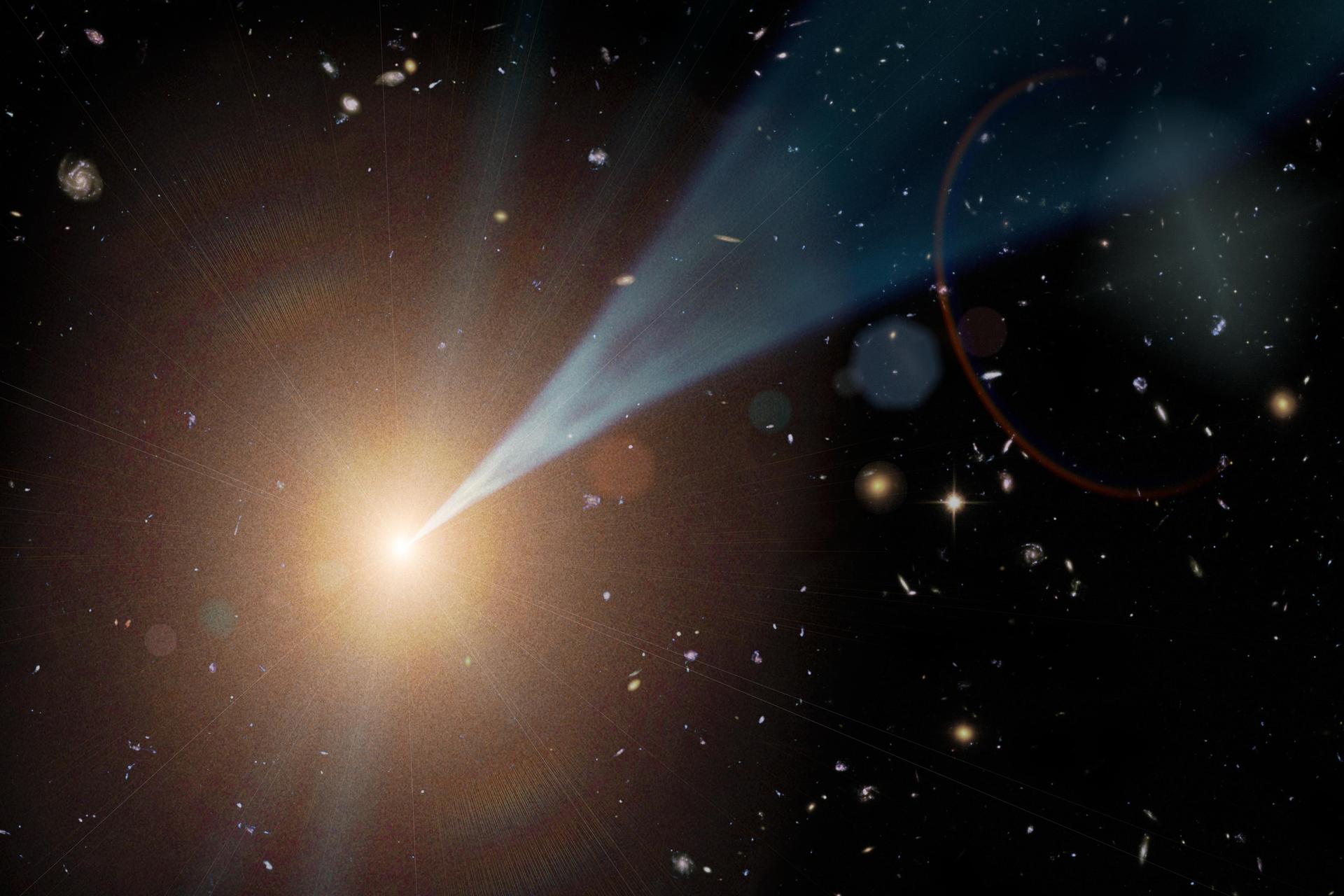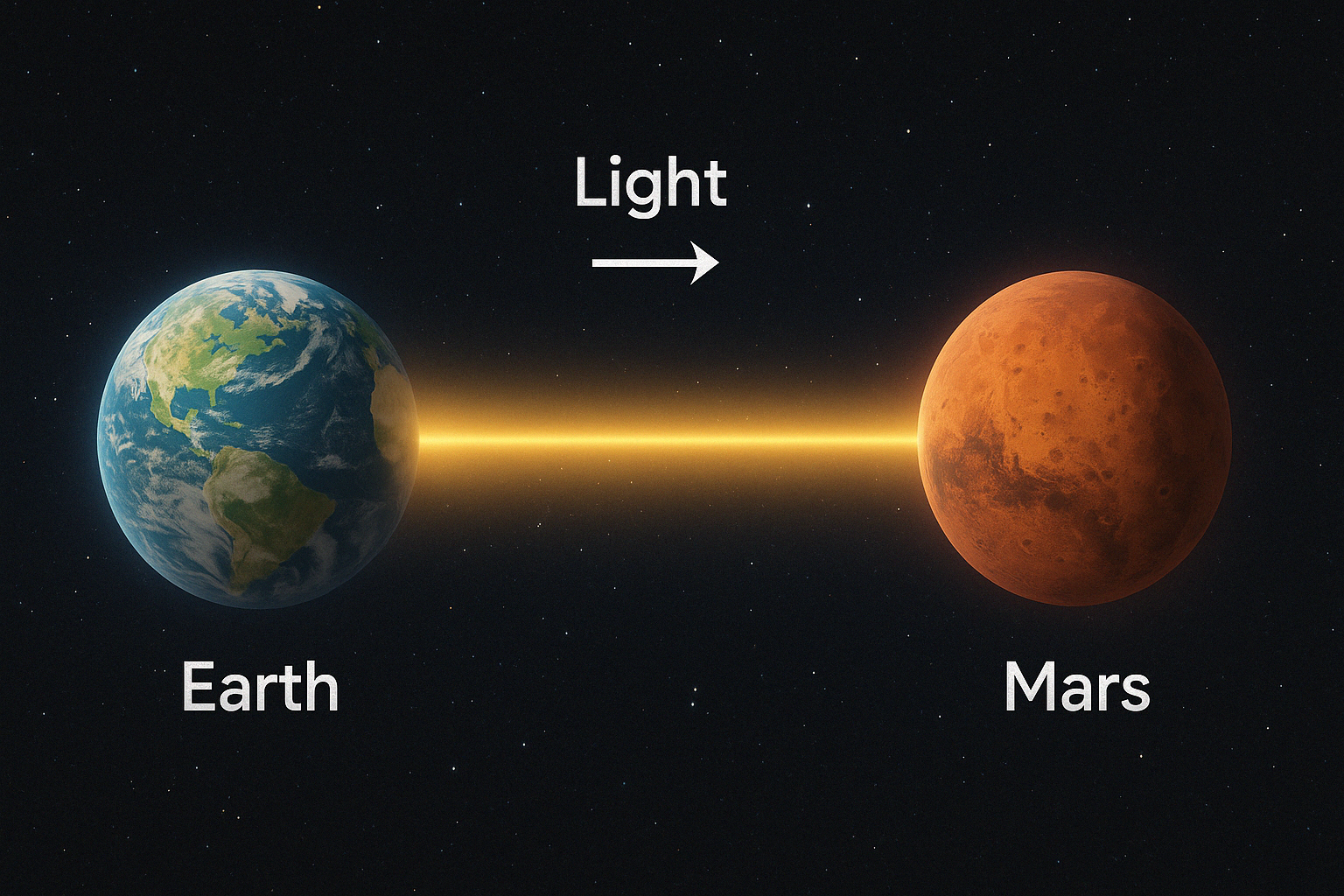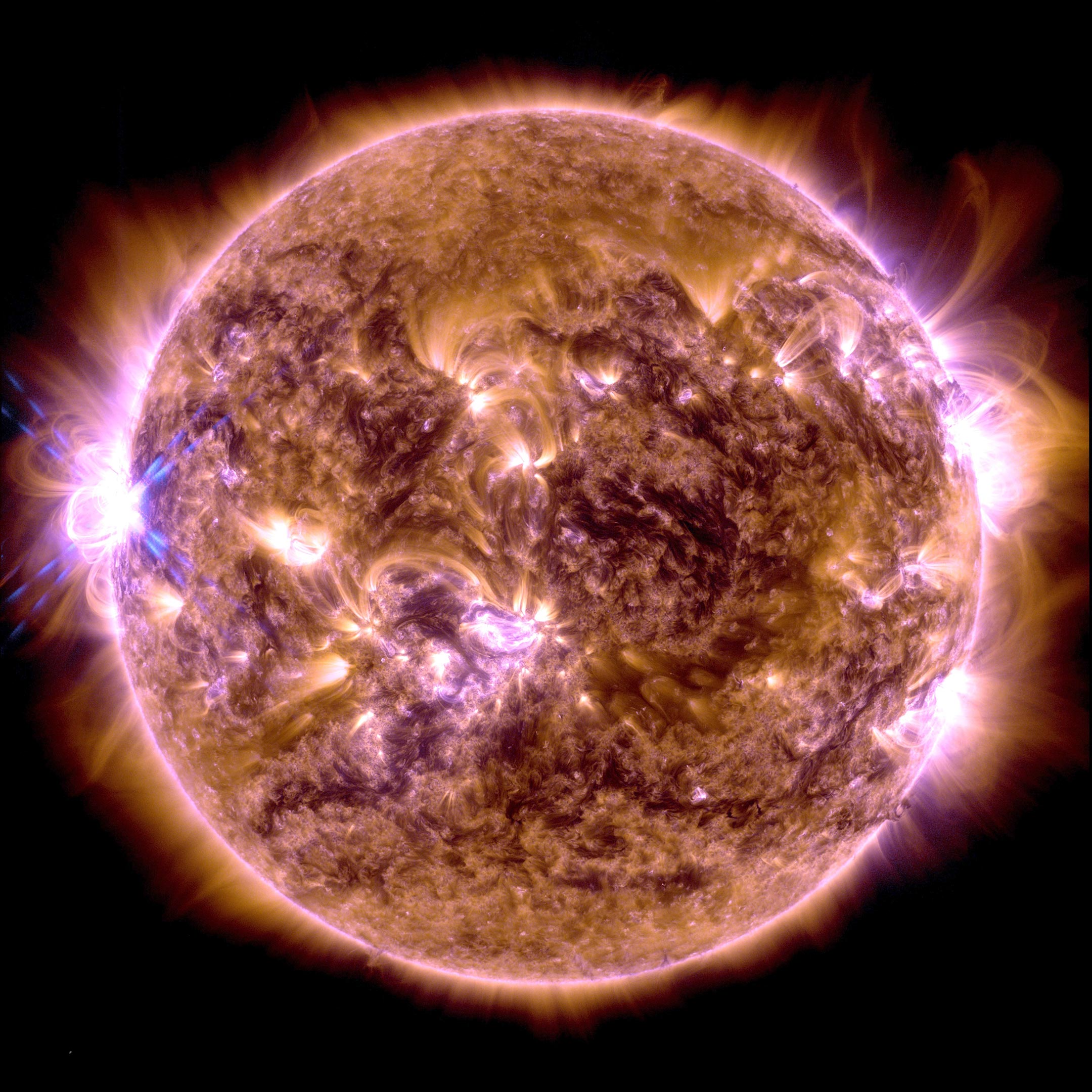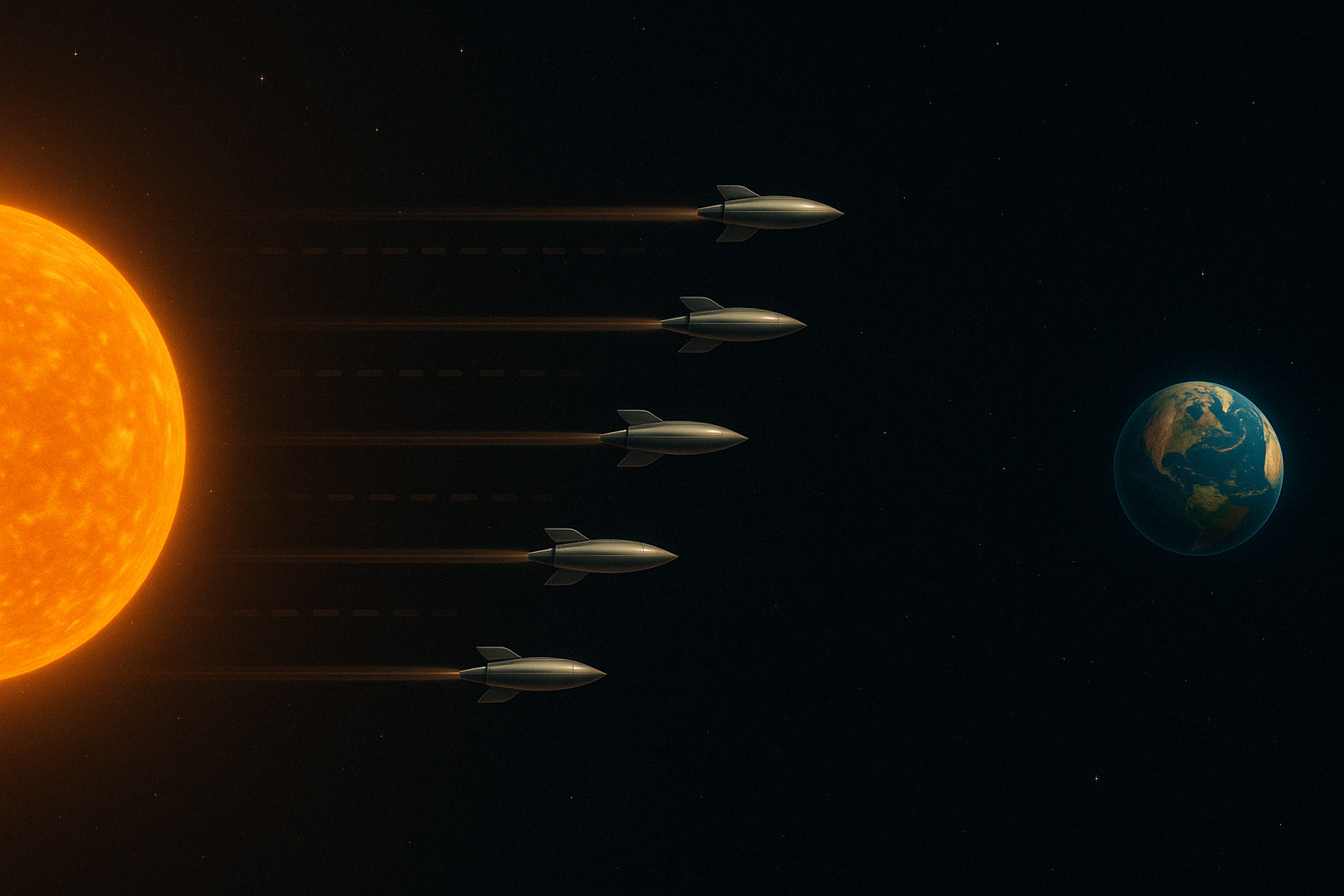Relativity and the Speed of Light

Part 1: How Fast Is Light?
The speed of light in a vacuum is a cornerstone of modern physics. It is precisely measured to be 299,792,458 meters per second, which is approximately 300,000 kilometers per second. To visualize this speed, consider that light can circle the entire planet Earth more than seven times in just one second. This incredible speed defines the structure of space and time in our universe.
In the realm of astronomy, where distances between stars and galaxies stretch into trillions of kilometers, ordinary units of measure become impractical. That’s why scientists use the concept of a “light-year”—the distance light travels in a year—which equals about 9.46 trillion kilometers. This scale allows us to comprehend cosmic distances with more clarity. For instance, the nearest star system, Alpha Centauri, is over four light-years away from us.
More importantly, the speed of light isn’t just a fast number—it’s the ultimate speed limit in the universe. According to Einstein’s special theory of relativity, nothing with mass can ever be accelerated to the speed of light because the energy required would become infinite. This makes light speed a fundamental barrier in physics, setting the rules for how objects interact, travel, and experience time.

Part 2: How Much Energy Does It Take to Get Close to Light Speed?
As objects move faster and faster, they gain kinetic energy. But as they approach the speed of light, something strange happens: the energy required to continue accelerating increases not linearly, but exponentially. This phenomenon is explained by the relativistic energy equation:
E_k = (γ - 1)mc²
Here’s what each symbol represents:
- Ek: the relativistic kinetic energy of the object
- m: the rest mass of the object (say, 1 kilogram)
- c: the constant speed of light
- γ (gamma): the Lorentz factor, calculated by the formula γ = 1 / √(1 – v²/c²)
As an object’s velocity (v) approaches the speed of light (c), the Lorentz factor γ increases toward infinity. This means even small increments in speed require vast amounts of energy. Essentially, the universe puts a hard stop on reaching or surpassing the speed of light for any object that has mass. The closer you get to c, the more energy you need—and the curve is steep.
This is why accelerating something as small as a baseball or even a subatomic particle to near-light speed requires enormous amounts of energy. It’s not just a technical challenge—it’s a fundamental physical limitation built into the fabric of spacetime.

Part 3: How Big Are These Energies?
To understand just how extreme this energy requirement is, let’s put it in terms of something more familiar: the energy released by an atomic bomb. The bomb dropped on Hiroshima in 1945 released about 63 trillion joules of energy. In SI units, that’s 63 terajoules or 0.063 petajoules (PJ).
Now consider how much energy it would take to accelerate just 1 kilogram of mass to various relativistic speeds. Here’s a breakdown:
- 0.5c: 13.9 PJ (equivalent to around 221 Hiroshima bombs)
- 0.9c: 116 PJ (≈ 1,841 bombs)
- 0.99c: 548 PJ (≈ 8,698 bombs)
- 0.9999c: 6,275 PJ (≈ 99,603 bombs)
- 0.9999999c: 636,390 PJ (≈ 10,101,428 bombs)
These numbers are staggering. The energy required to push a single kilogram to near-light speeds dwarfs the energy output of even our most destructive technologies. It illustrates just how unattainable faster-than-light travel is using conventional methods, and why scientists are exploring alternative ideas like warp drives or wormholes in theoretical physics.

Part 4: Traveling 10 Light-Years at 99.999999% of Light Speed
Now let’s imagine you are in a spaceship capable of traveling at 99.999999% the speed of light, and you set out on a journey to a star system 10 light-years away. According to observers on Earth, this journey would take roughly 10 years, since distance equals speed multiplied by time. But from your point of view inside the spaceship, the experience is radically different.
This discrepancy is due to a relativistic effect known as time dilation. At such high speeds, time slows down for you dramatically. Using the Lorentz factor γ ≈ 7071 at this velocity, the time you experience during your journey is:
Traveler time = 10 years / 7071 ≈ 12.5 hours
So while Earth ages a full decade, you only experience about half a day. This is not science fiction—it’s a verified consequence of Einstein’s equations and has been observed (on a smaller scale) in particle accelerators and with satellites orbiting Earth.

Part 5: Why Does the Trip Feel So Fast?
Two main effects combine to make high-speed travel feel so quick for the traveler:
- Time Dilation: Time runs slower for the traveler than for stationary observers. The faster you go, the slower your clock ticks compared to others.
- Length Contraction: Distances in the direction of motion shrink for the traveler. From your perspective, the 10 light-year journey seems much shorter.
Even at everyday speeds, these effects technically still occur. They’re just too small to notice. For example:
- Running (~10 m/s): Your clock lags behind by about 2 trillionths of a second per hour.
- Flying in a jet (~3,000 km/h): You experience a delay of about 14 nanoseconds per hour.
- Astronauts on the ISS (~7.6 km/s): Age 1 microsecond less per hour than people on Earth.
These effects, while minute at low speeds, become dramatically significant as you approach the speed of light. This is why relativistic physics becomes essential in fields like astrophysics, satellite navigation (like GPS), and high-energy particle physics.

Part 6: A Simple Formula to Calculate Traveler’s Time
If you want to know how much slower time passes at high speeds, you can use the Lorentz factor formula:
γ = 1 / √(1 - v²/c²)
Then compute the traveler’s time as:
Traveler’s Time = Earth Time / γ
Let’s look at some specific examples based on a 10-year journey from Earth’s point of view:
- 50% of light speed: γ ≈ 1.15 → Traveler experiences ≈ 8.66 years
- 90%: γ ≈ 2.29 → ≈ 4.36 years
- 99%: γ ≈ 7.09 → ≈ 1.41 years
- 99.9%: γ ≈ 22.36 → ≈ 5.4 months
- 99.9999%: γ ≈ 7071 → ≈ 12.5 hours
As you can see, small increases in speed near the speed of light cause massive changes in perceived time. This exponential nature is why time travel (to the future) through high-speed travel is not just theoretical—it’s physically real.
Coming next: deeper insights into the philosophy of time, futuristic propulsion systems, and imaginative sci-fi scenarios where these principles play out on a grand scale.
External References for the Speed of Light
- For a comprehensive overview, see Wikipedia’s overview of light speed .
- NASA also provides an accessible explanation: “What Is the Speed of Light?” on NASA’s site .
Leave a Reply